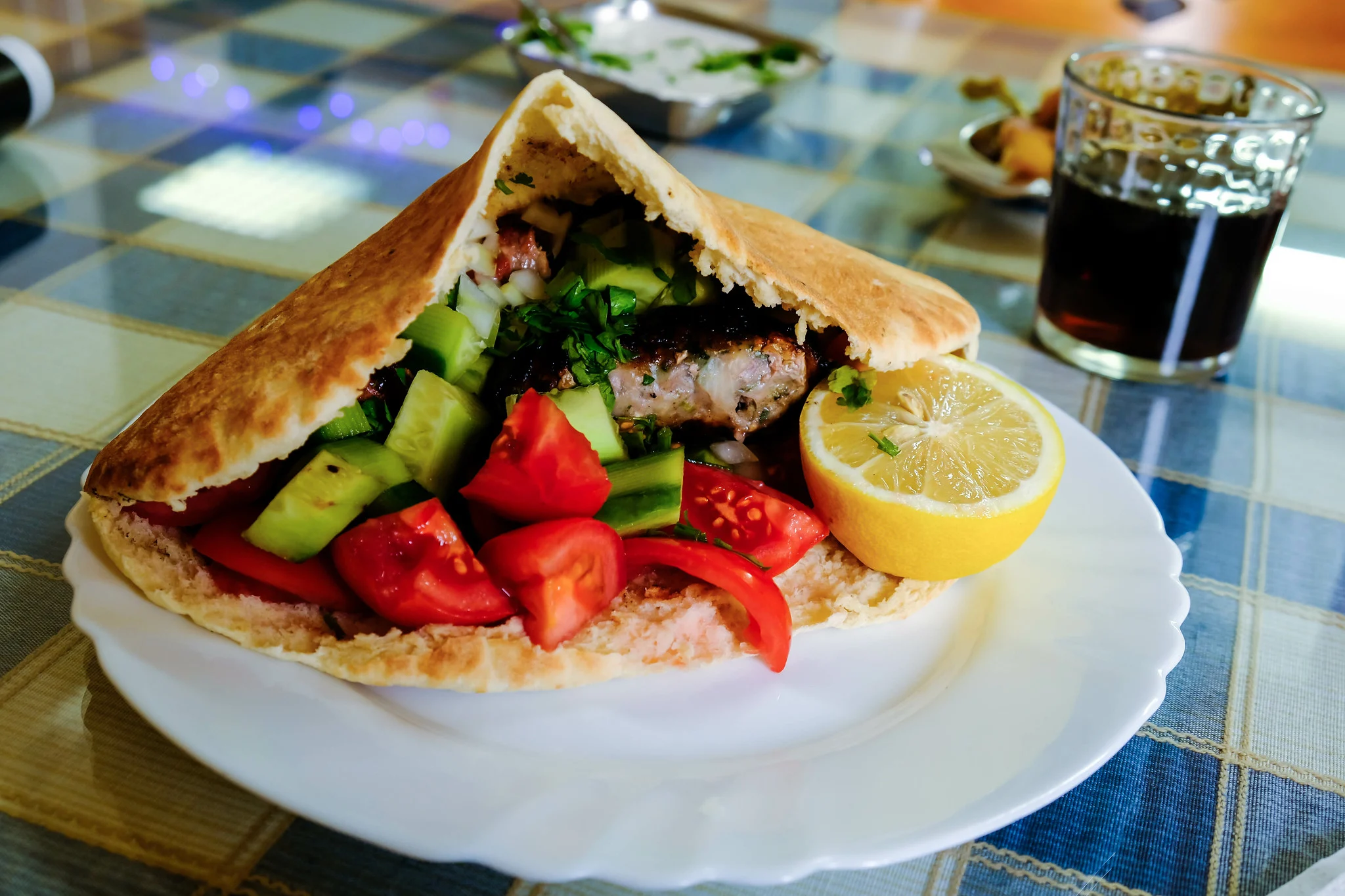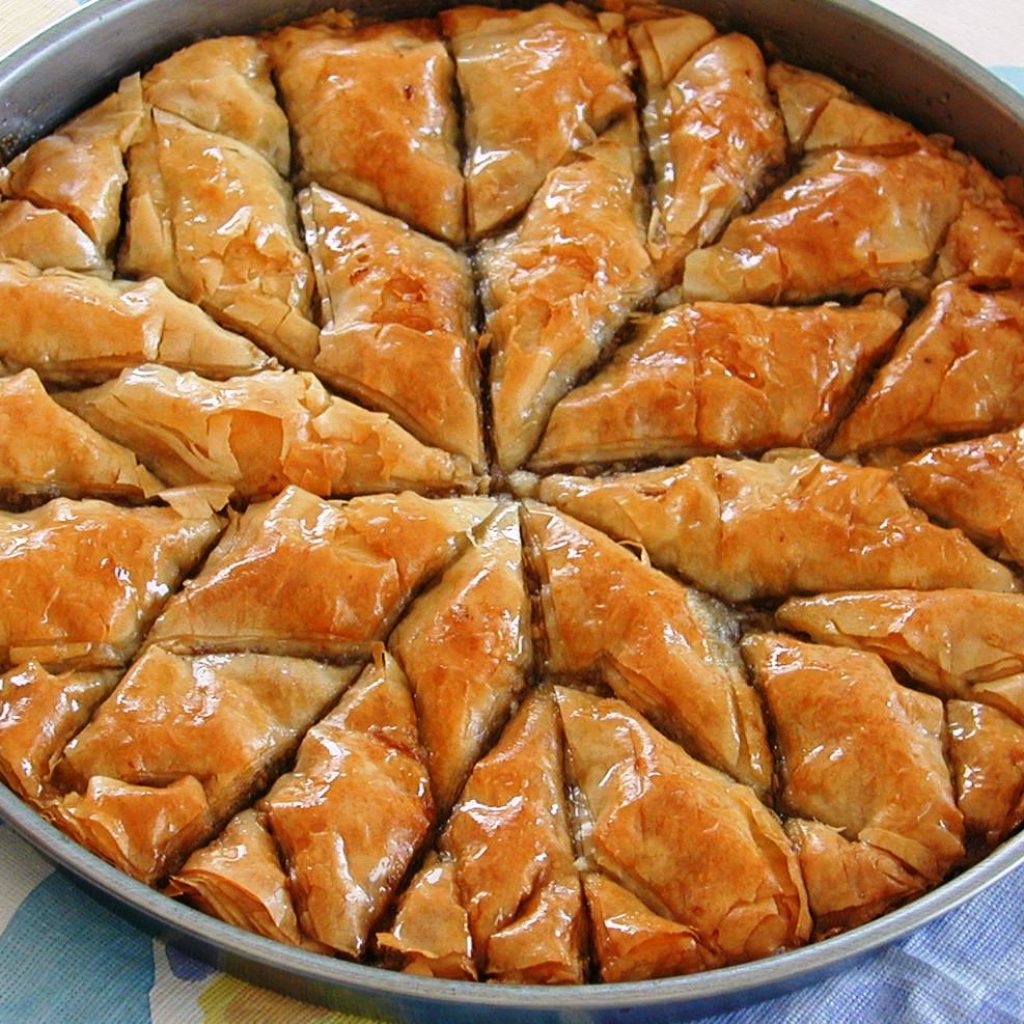Albanian food, a tantalizing tapestry of flavors, aromas, and culinary traditions, beckons us on a gastronomic adventure. Rooted in ancient culinary practices and shaped by a rich cultural heritage, Albanian cuisine offers a delectable blend of unique flavors and ingredients that have delighted palates for centuries.
From the vibrant streets of Tirana to the charming villages nestled amidst rolling hills, Albanian cuisine weaves together the influences of its neighboring Balkan nations, Mediterranean shores, and Ottoman legacy. Each region boasts its own culinary treasures, showcasing the diverse tapestry of flavors that define Albanian food.
Culinary Heritage and History

Albanian cuisine is a testament to the country’s rich history and diverse cultural influences. Over centuries, it has absorbed elements from Ottoman, Mediterranean, and Balkan traditions, resulting in a unique blend of flavors and techniques.
The use of fresh, seasonal ingredients is a hallmark of Albanian cooking. Vegetables such as tomatoes, peppers, and eggplant are widely used, along with herbs like oregano, basil, and rosemary. Meat, particularly lamb and goat, plays a significant role, often grilled or stewed in aromatic sauces.
Traditional Gatherings and Celebrations
Albanian food is deeply intertwined with the country’s social and cultural fabric. Traditional gatherings and celebrations are often centered around elaborate feasts, where dishes like byrek(savory pastries), tavë kosi(lamb stew), and baklava(sweet pastry) take center stage.
Regional Variations and Influences
Albanian cuisine exhibits a rich tapestry of regional variations, each shaped by unique geographical, climatic, and cultural influences. These variations reflect the country’s diverse landscape, ranging from mountainous highlands to fertile coastal plains.
The mountainous regions of northern Albania, such as the Alps and Dinaric Alps, are known for their hearty and meat-centric dishes. The cold climate and rugged terrain have influenced the development of dishes like fli, a cornbread pancake, and qofte, grilled meatballs.
These dishes provide sustenance and warmth in the harsh mountain environment.
Central Albania
Central Albania, including the capital Tirana, is a melting pot of culinary influences. The region’s proximity to the Adriatic Sea has led to the incorporation of seafood into local cuisine. Popular dishes include tavë kosi, a lamb stew with yogurt, and byrek, a flaky pastry filled with various ingredients like spinach, cheese, or meat.
Southern Albania, Albanian food
Southern Albania, bordering Greece, showcases a Mediterranean flair in its cuisine. The warm climate and fertile plains favor the cultivation of vegetables, fruits, and olives. Dishes like fërgesë, a vegetable stew with lamb, and qepëqe, a lamb and onion casserole, reflect the region’s agricultural bounty.
Coastal Albania
Along the Adriatic and Ionian coasts, seafood takes center stage. The fresh catch of the day is often grilled or fried and served with simple accompaniments like lemon and olive oil. Paella, a Spanish-influenced rice dish with seafood, is also popular in coastal areas.
Key Ingredients and Flavors

Albanian cuisine is characterized by its use of fresh, seasonal ingredients and a vibrant blend of flavors. The foundation of Albanian cooking lies in a combination of Mediterranean and Balkan influences, resulting in a unique and diverse culinary landscape.
Essential Ingredients
Essential ingredients in Albanian cooking include:
- Tomatoes: Used in a variety of dishes, from salads to stews, tomatoes provide a tangy and juicy base for many Albanian recipes.
- Onions: Onions add a savory and aromatic depth to dishes, often used as a base for sauces and soups.
- Garlic: Garlic is a staple ingredient in Albanian cooking, imparting a pungent and flavorful aroma to dishes.
- Yogurt: Yogurt is a versatile ingredient used in both savory and sweet dishes, adding a creamy and tangy flavor.
li> Olive oil: Olive oil is the primary cooking oil used in Albania, contributing a rich and fruity flavor to dishes.
Unique Flavors and Aromas
Albanian dishes are known for their vibrant and complex flavors, often achieved through the use of herbs, spices, and seasonings. Common herbs include:
- Oregano: Oregano is a widely used herb in Albanian cooking, adding a warm and slightly bitter flavor to dishes.
- Thyme: Thyme is a fragrant herb that adds a delicate and earthy flavor to dishes.
- Basil: Basil is used to add a fresh and aromatic flavor to dishes, especially in salads and sauces.
Spices commonly used in Albanian cuisine include:
- Paprika: Paprika is a vibrant red spice that adds a smoky and slightly sweet flavor to dishes.
- Cumin: Cumin is a warm and earthy spice that adds a distinctive flavor to dishes.
- Black pepper: Black pepper is a versatile spice that adds a sharp and slightly spicy flavor to dishes.
Seasonings, such as salt and lemon juice, are also essential in Albanian cooking, balancing the flavors and enhancing the overall taste profile of dishes.
Popular Dishes and Preparation Methods: Albanian Food

Albanian cuisine boasts a diverse range of delectable dishes, each with its own unique flavors and preparation methods. From hearty stews to grilled meats and savory pastries, Albanian cuisine offers a culinary adventure for every palate.
Popular Albanian Dishes
| Dish Name | Region of Origin | Key Ingredients | Preparation Method |
|---|---|---|---|
| Tavë Kosi | Central Albania | Lamb, yogurt, rice | Lamb and rice are cooked together in a clay pot with yogurt, creating a rich and flavorful stew. |
| Fërgesë Tirane | Tirana | Lamb tripe, yogurt, garlic | Lamb tripe is boiled and then sautéed with yogurt, garlic, and spices, resulting in a tangy and aromatic dish. |
| Byrek | Throughout Albania | Filo dough, cheese, spinach | Thin sheets of filo dough are layered with cheese, spinach, or other fillings and baked until golden brown, creating a crispy and flaky pastry. |
| Qofte | Throughout Albania | Ground beef, onion, spices | Ground beef is mixed with onion, spices, and breadcrumbs and then grilled or fried, forming juicy and flavorful meatballs. |
Cooking Techniques in Albanian Cuisine
Albanian cuisine employs various cooking techniques to create its distinctive flavors. Grilling is a popular method, particularly for meats such as lamb, chicken, and fish. Stewing is another common technique, used to prepare hearty dishes like Tavë Kosi. Baking is also widely used, especially for pastries such as Byrek.
Traditional Albanian Breads
Bread holds a significant place in Albanian cuisine, representing the heart of every meal. It is not just a staple food but also carries cultural and social importance, symbolizing hospitality, unity, and the sharing of life’s moments.The diversity of Albanian breads is as rich as the country’s landscape, with each region boasting its unique variations.
These breads exhibit distinct shapes, textures, and flavors, reflecting the cultural influences and local traditions of their respective areas.
Popular Albanian Breads and Their Regional Variations
- Pita e Madhe: A large, round, unleavened bread common throughout Albania, served as an accompaniment to various dishes.
- Pita e Pjekur: A baked pita bread popular in central and northern Albania, known for its crispy crust and soft interior.
- Flia: A layered pie made with thinly rolled dough and various fillings, originating from the northern regions of Albania.
- Byrek: A savory pastry filled with spinach, cheese, or meat, originating from the southern regions of Albania.
- Petulla: A fried dough ball popular as a street food or breakfast item, often served with honey or sugar.
- Baklava: A sweet pastry made with layers of filo dough, nuts, and syrup, influenced by Ottoman cuisine.
- Kadaif: A shredded pastry soaked in syrup, similar to baklava, but with a coarser texture.
- Hallva: A dense, sweet confection made from sesame seeds and sugar, a popular dessert in many Albanian regions.
These traditional Albanian breads reflect the country’s rich culinary heritage and continue to be an integral part of Albanian dining experiences, enjoyed by locals and visitors alike.
Food and Culture
Food holds a central position in Albanian festivals and social gatherings, where it transcends mere sustenance and becomes an integral part of the cultural fabric. Traditional dishes and culinary practices contribute significantly to the social significance of these events, fostering a sense of community and preserving cultural heritage.
Festivals and Gatherings
Albanian festivals are a vibrant tapestry of music, dance, and traditional cuisine. One notable example is the Dita e Verës (Summer Day), celebrated on March 14th. This festival marks the arrival of spring and is characterized by the preparation of traditional dishes such as byrek(a flaky pastry filled with cheese, meat, or vegetables) and kukurec(grilled lamb intestines).
Social gatherings, such as weddings and family celebrations, are also important occasions for showcasing Albanian culinary traditions. Guests are treated to an array of dishes, including roasted lamb, tavë kosi(lamb stew), and baklava(a sweet pastry made with filo dough and honey).
Detailed FAQs
What are some key ingredients used in Albanian cooking?
Albanian cooking relies heavily on fresh vegetables, such as tomatoes, peppers, onions, and garlic, as well as herbs like oregano, basil, and thyme. Olive oil is the preferred cooking fat, adding a rich flavor to dishes.
What is the national dish of Albania?
Tavë kosi, a casserole made with lamb, yogurt, rice, and eggs, is considered the national dish of Albania. It is often served on special occasions and is a symbol of Albanian hospitality.
What are some popular Albanian desserts?
Albanian desserts are known for their sweetness and often feature honey, nuts, and fruits. Some popular desserts include baklava, kadaif, and trileçe.
